Abstract
1. A comparison has been made of the pressures recorded from pial branches of the middle cerebral artery in dogs and macaques. This pressure has been shown to be between 88 and 95% of femoral arterial pressure in dogs under chloralose anaesthesia, and between 80 and 90% of femoral arterial pressure in macaques similarly anaesthetized.
2. The effect of occlusion of the main vessels in the neck is shown to differ considerably in the two species. Blood pressure within the forebrain of the dog is shown to be largely dependent upon the integrity of the external carotid artery, whereas in the monkey the external carotid artery is without effect in the maintenance of forebrain blood pressure. Occlusion of the four major arteries in the neck is shown to produce a greater effect in the macaque and to be accompanied by signs of medullary ischaemia in this species.
3. After occlusion of the main middle cerebral artery, arterial pressure measured distal to the occlusion depends upon the integrity of collateral vessels from the other cerebral arteries. When only a branch of the middle cerebral artery is occluded, the greater part of the residual blood pressure depends upon anastomoses from other branches of the middle cerebral artery itself.
Full text
PDF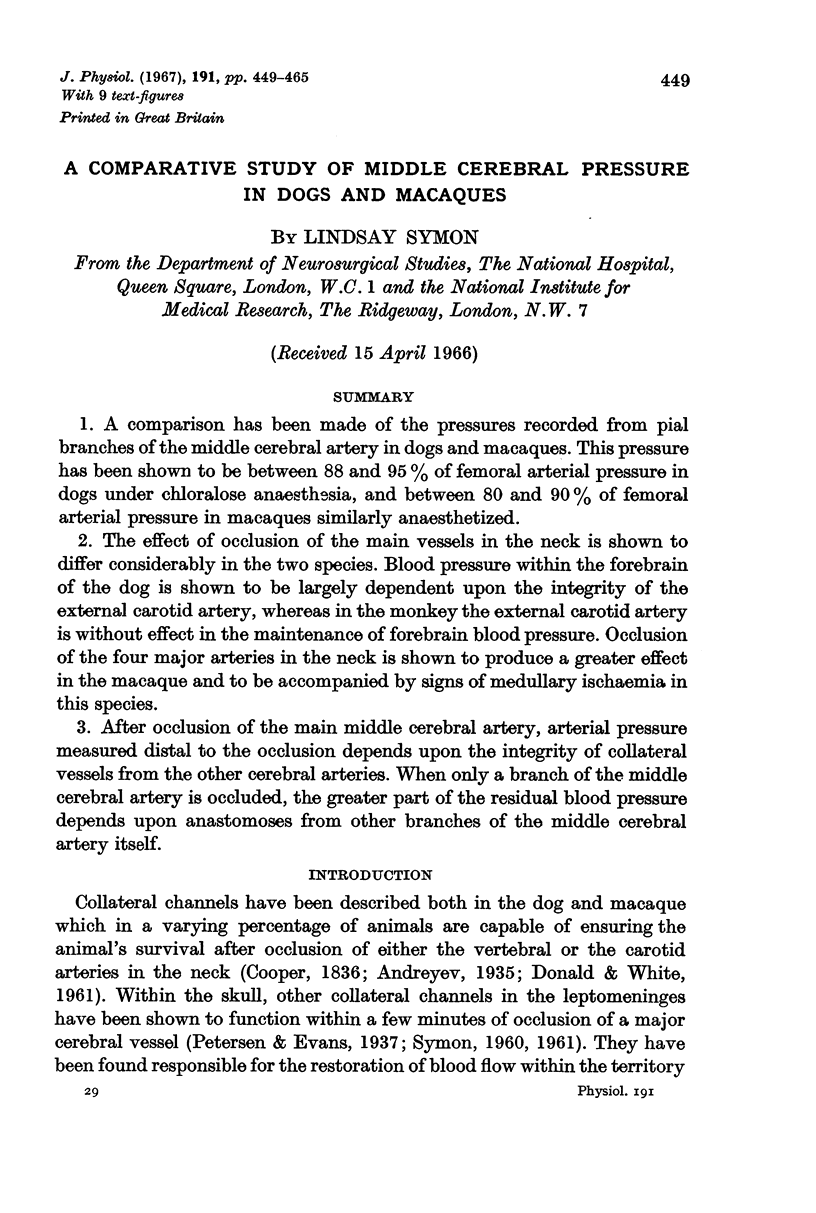
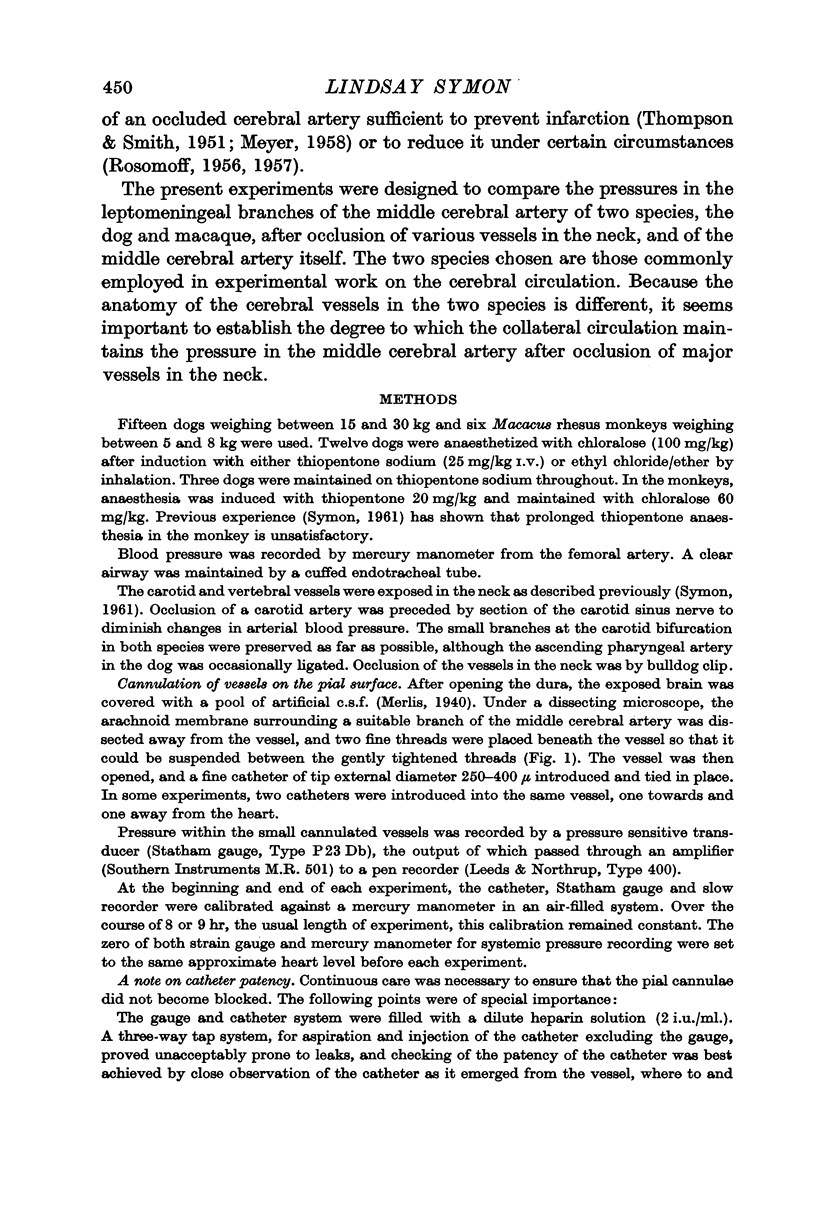

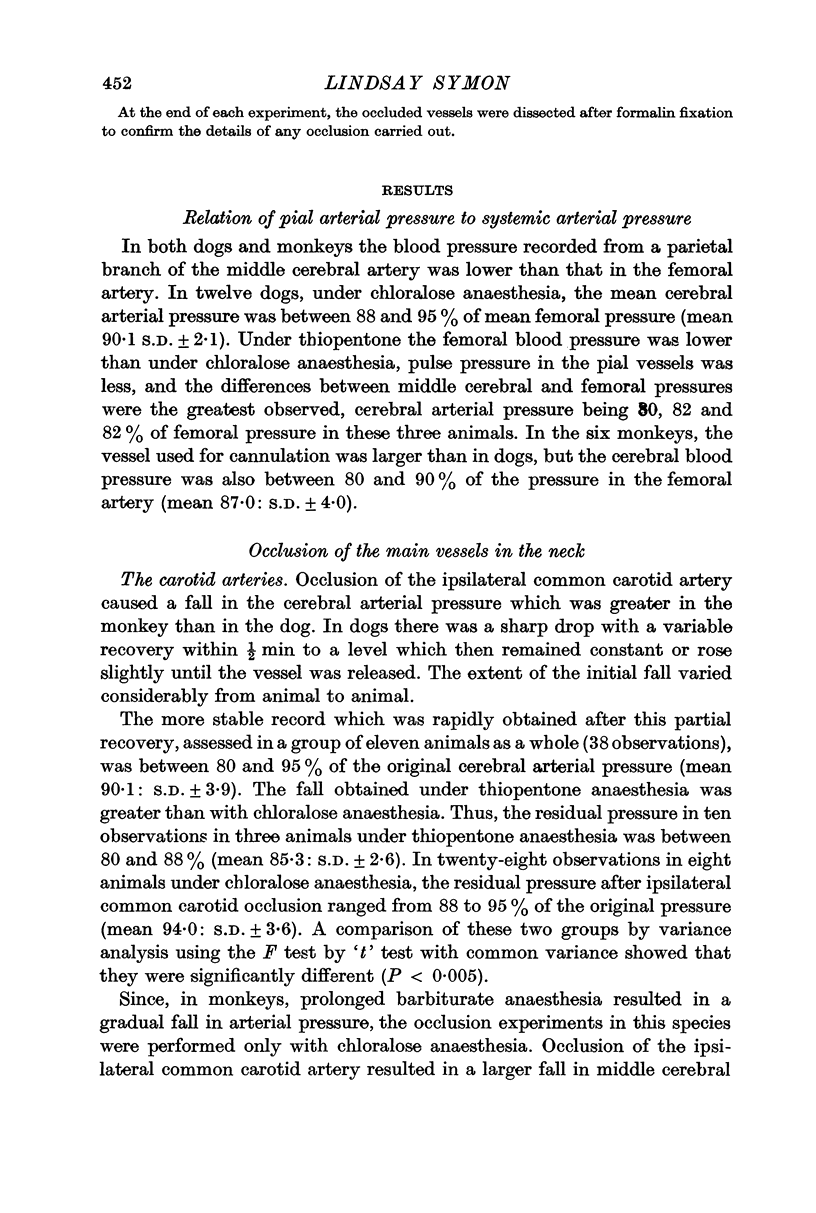
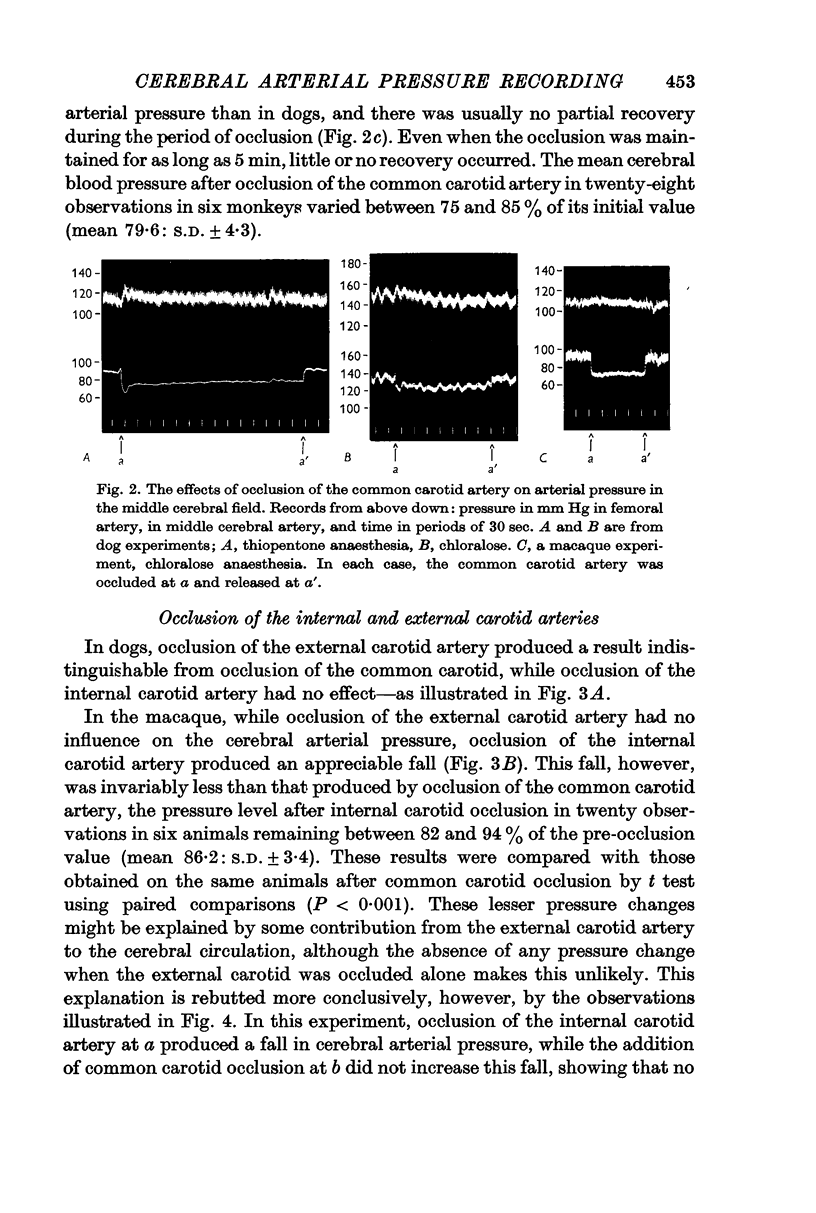
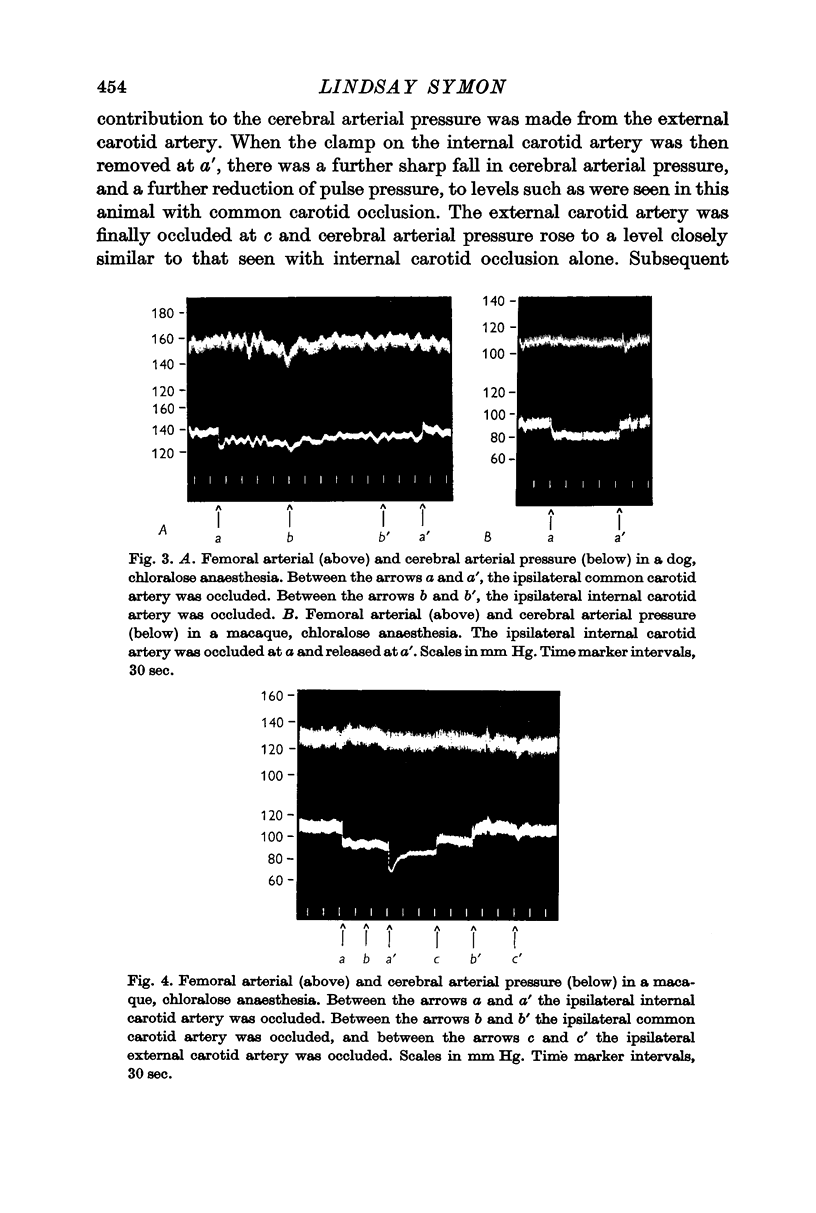
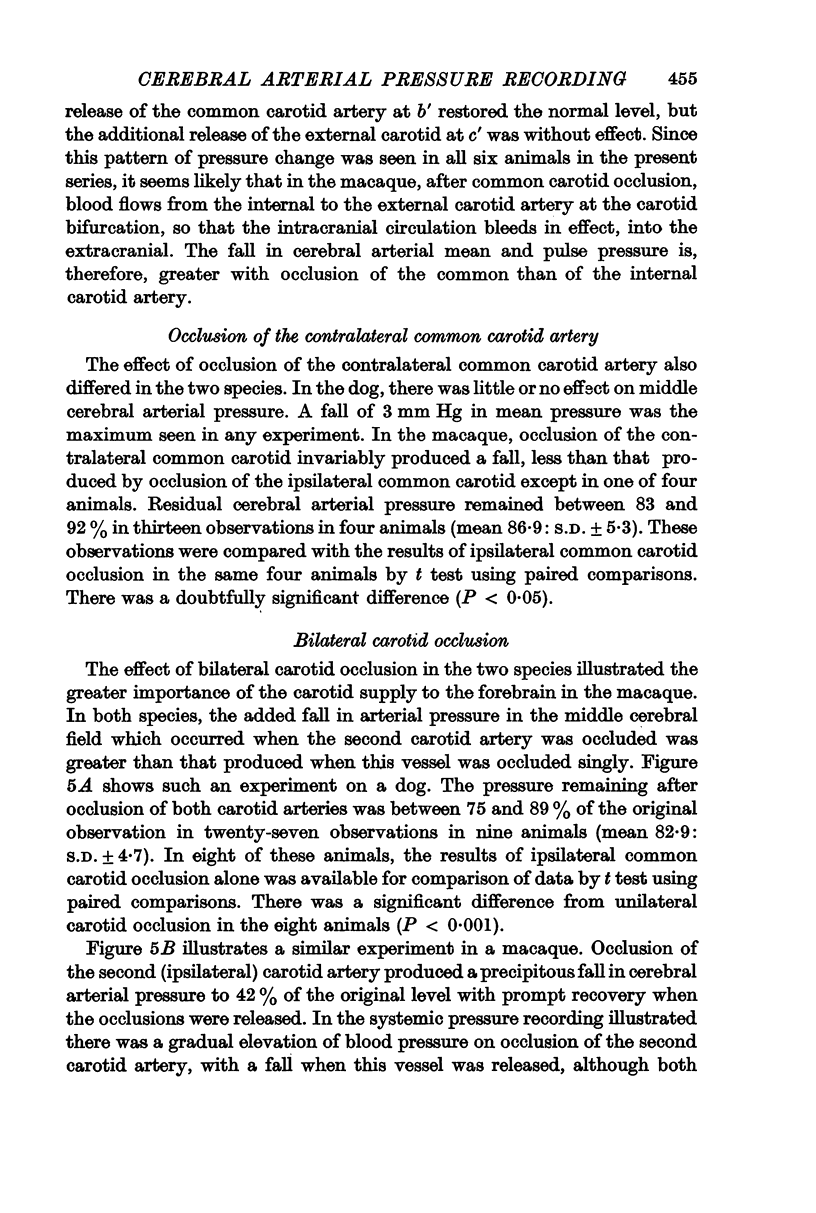
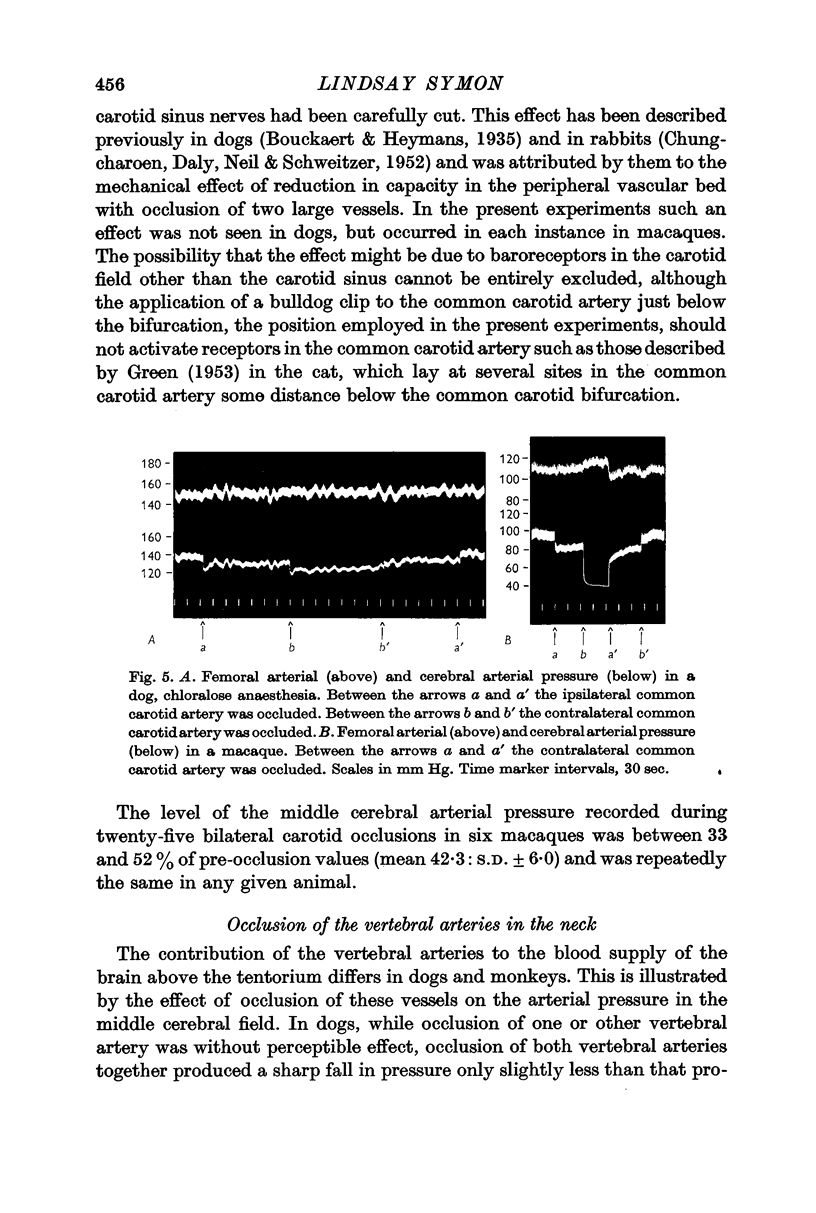
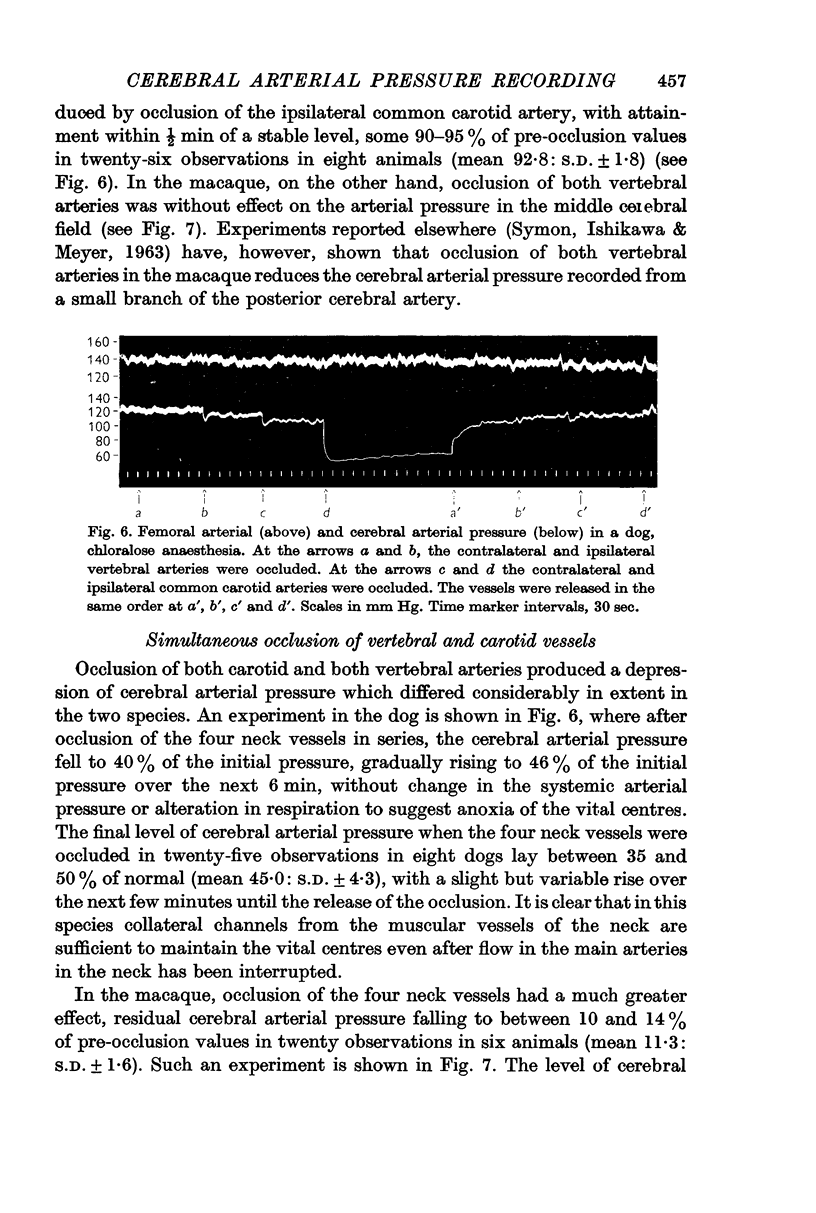

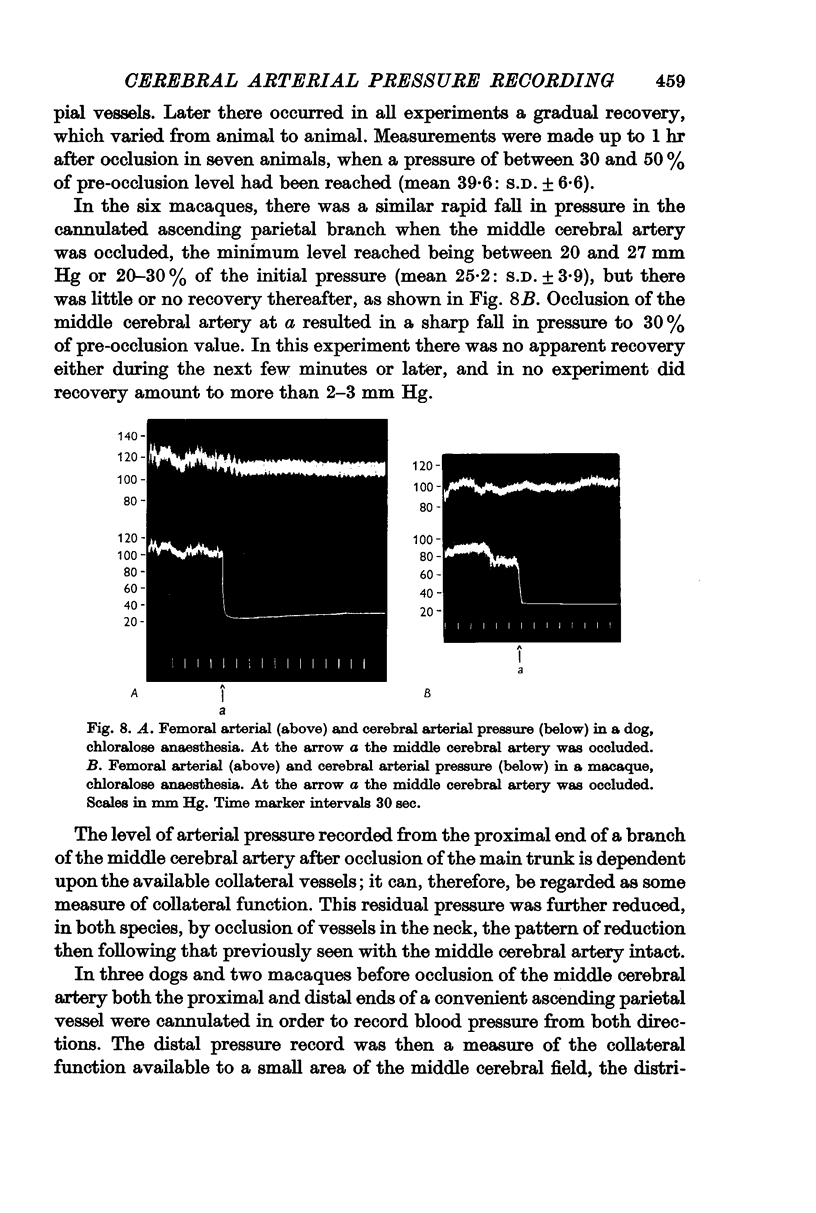
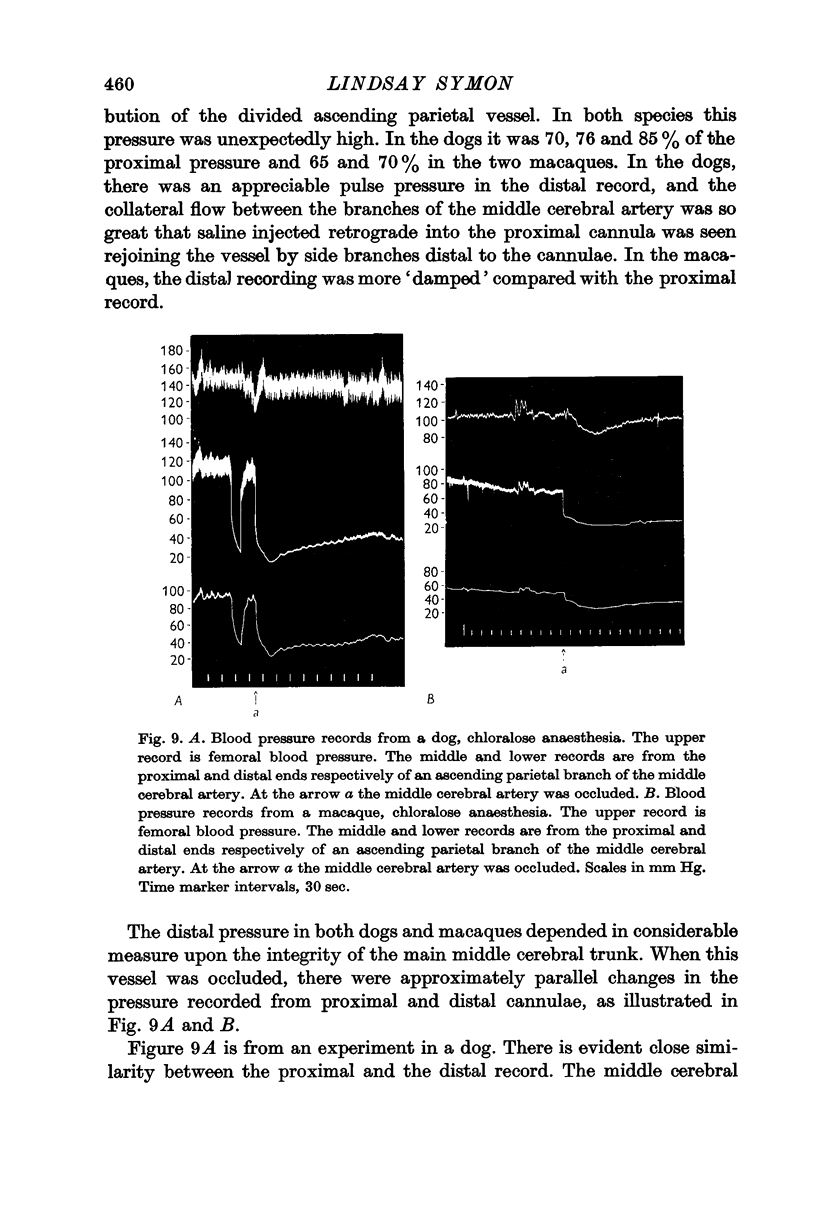
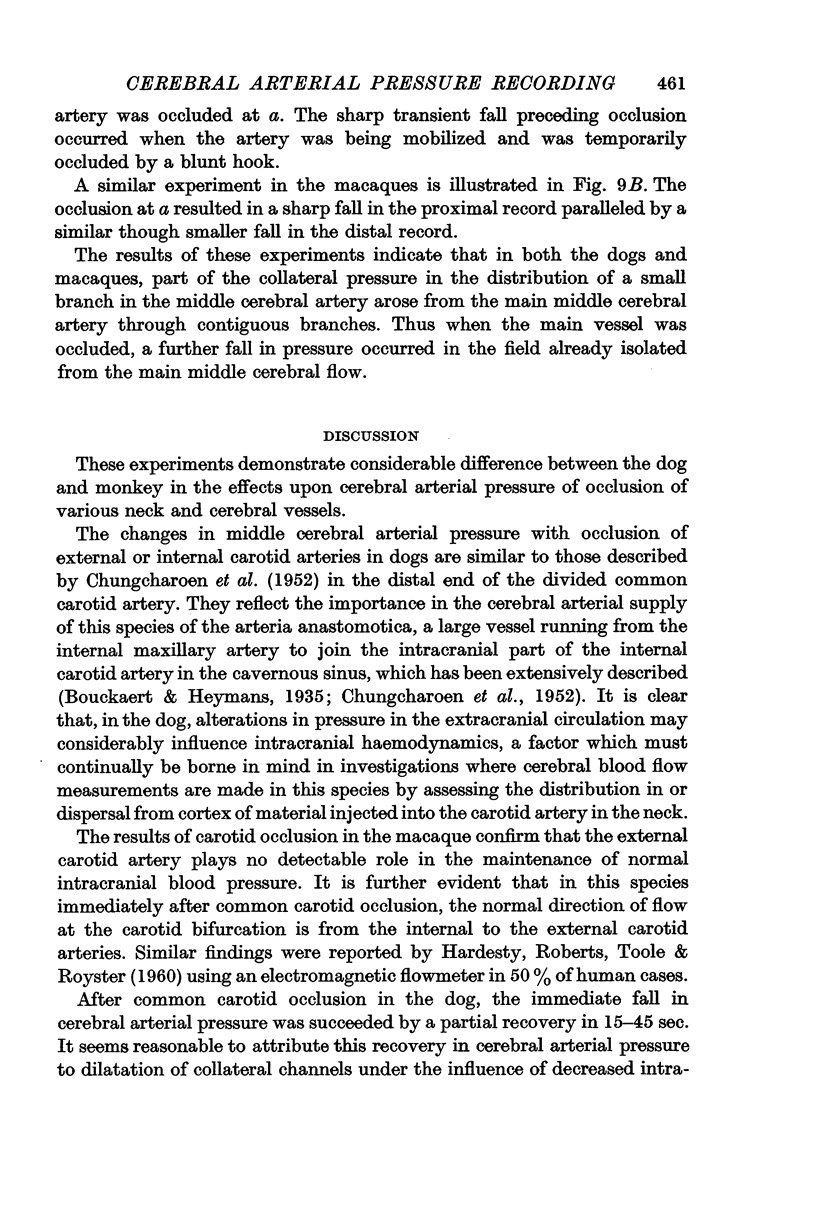
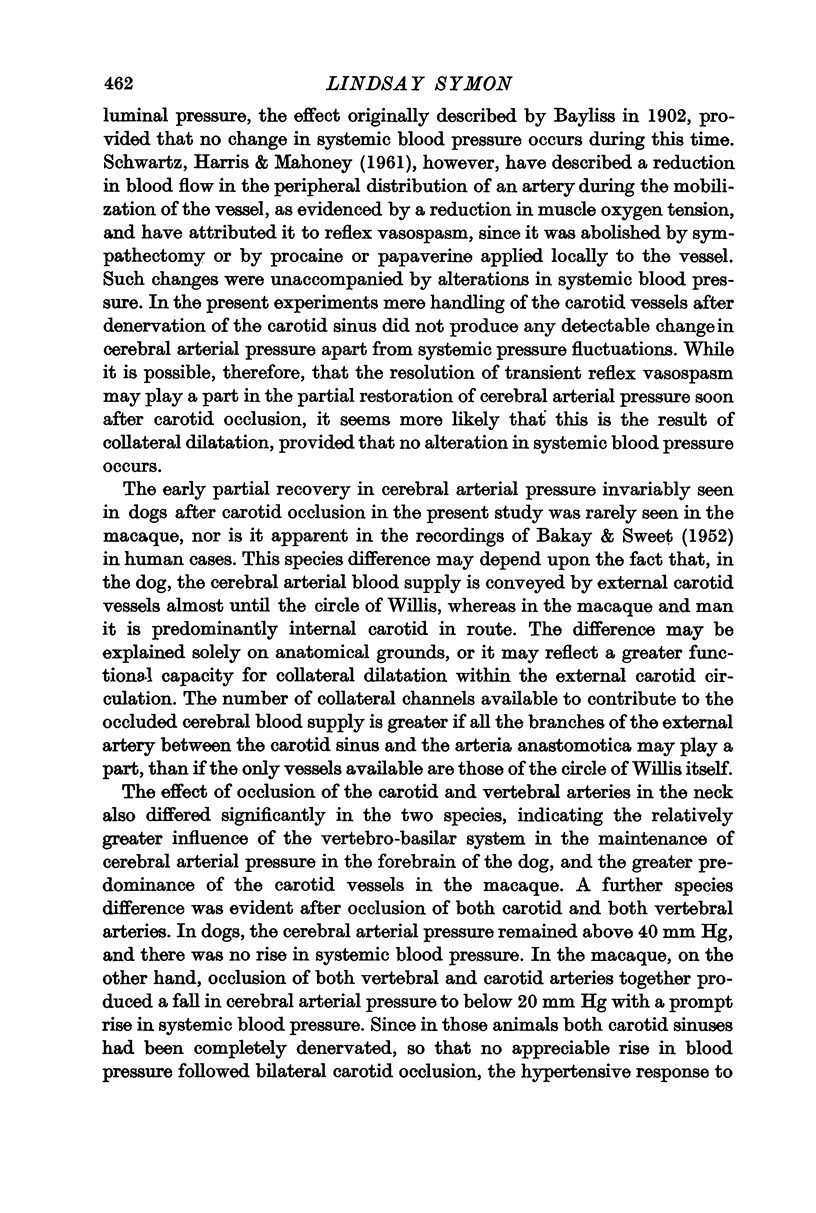
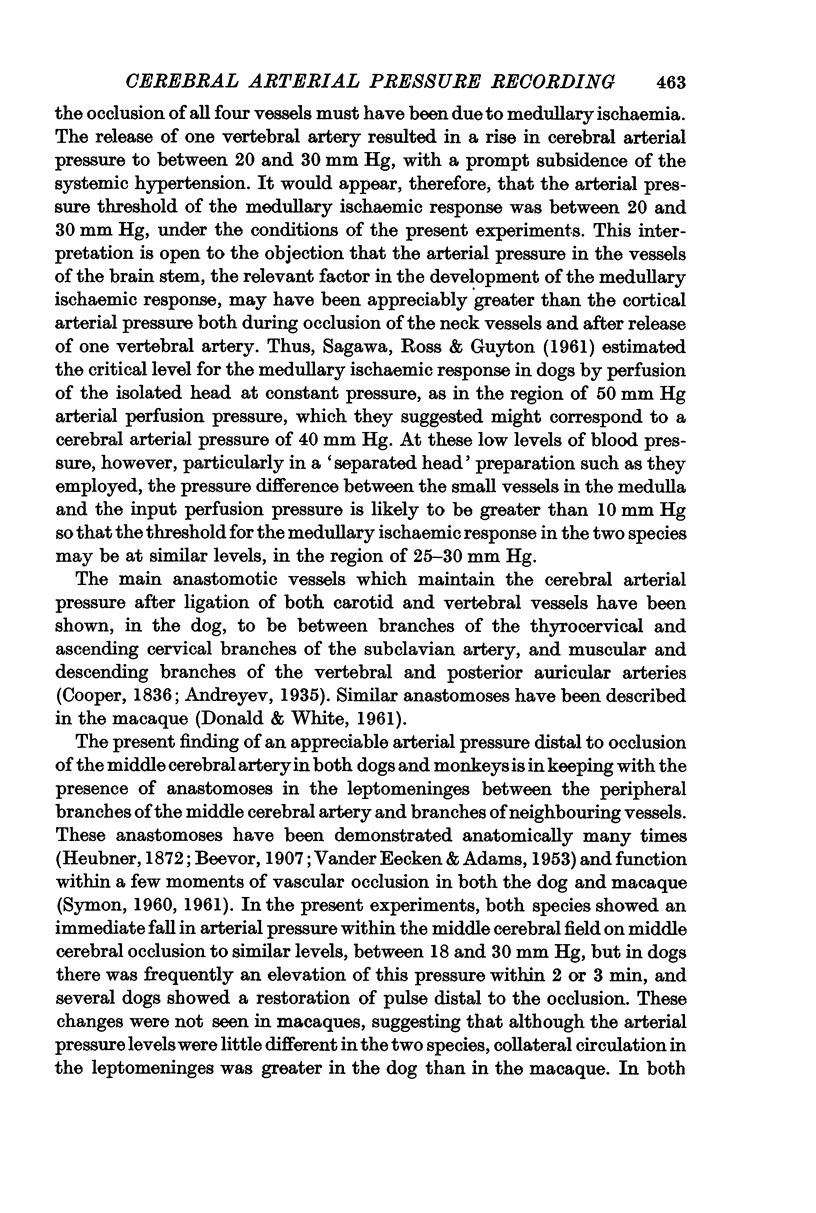
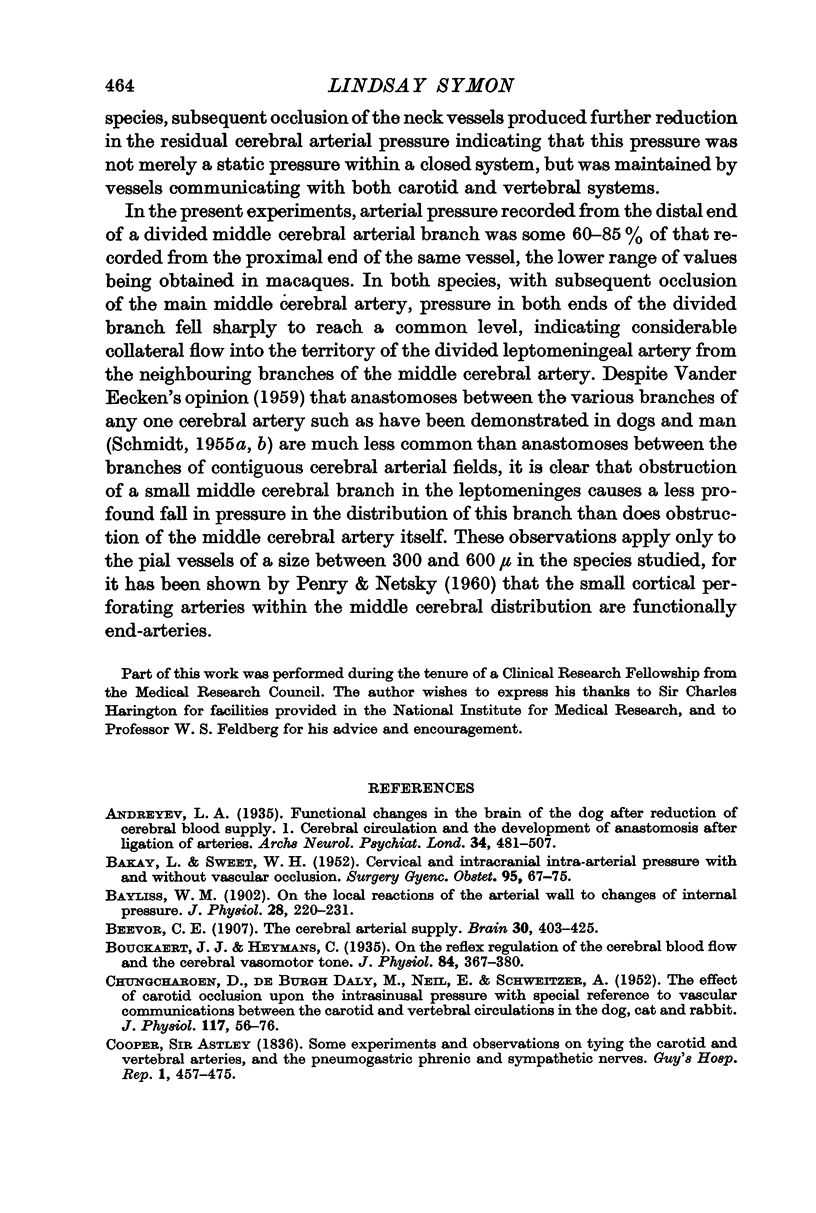
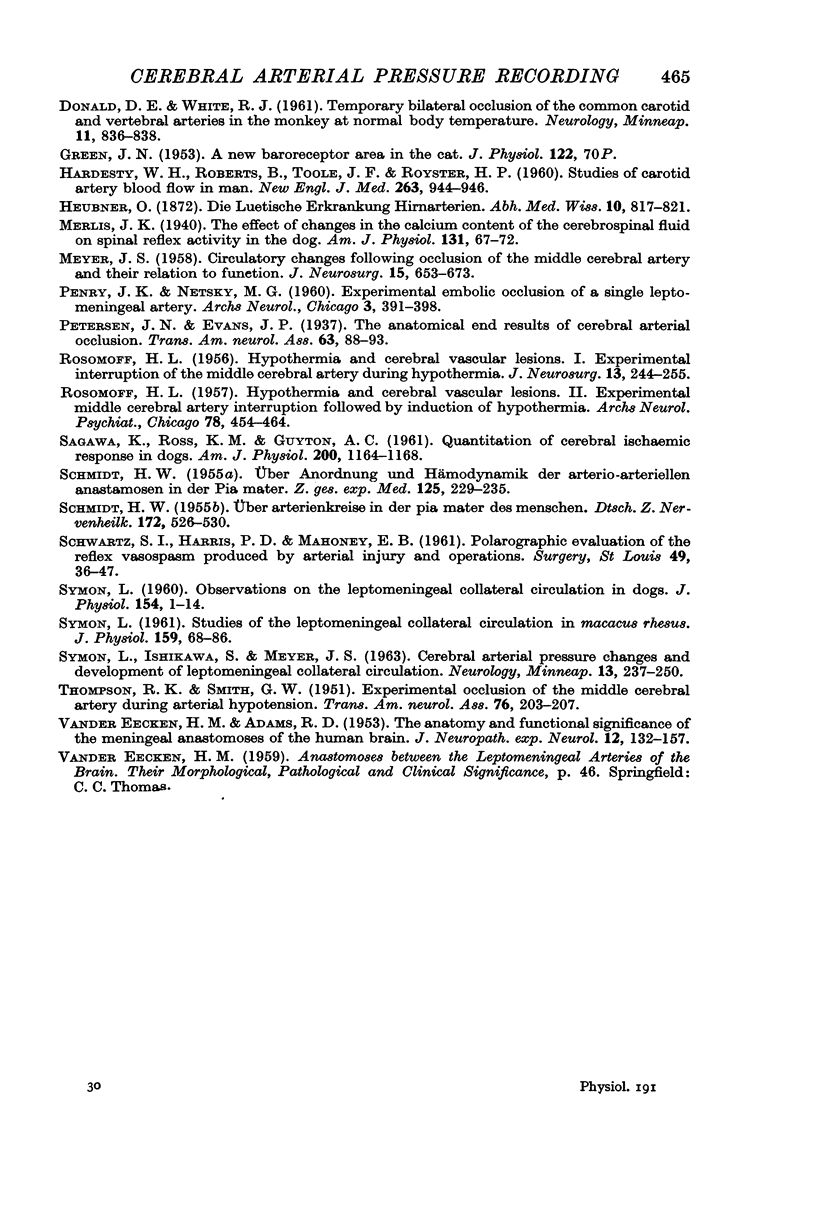
Images in this article
Selected References
These references are in PubMed. This may not be the complete list of references from this article.
- BAKAY L., SWEET W. H. Cervical and intracranial intra-arterial pressures with and without vascular occlusion. Surg Gynecol Obstet. 1952 Jul;95(1):67–75. [PubMed] [Google Scholar]
- Bayliss W. M. On the local reactions of the arterial wall to changes of internal pressure. J Physiol. 1902 May 28;28(3):220–231. doi: 10.1113/jphysiol.1902.sp000911. [DOI] [PMC free article] [PubMed] [Google Scholar]
- Bouckaert J. J., Heymans C. On the reflex regulation of the cerebral blood flow and the cerebral vaso-motor tone. J Physiol. 1935 Jul 24;84(4):367–380. doi: 10.1113/jphysiol.1935.sp003287. [DOI] [PMC free article] [PubMed] [Google Scholar]
- CHUNGCHAROEN D., De BURGH DALY M., NEIL E., SCHWEITZER A. The effect of carotid occlusion upon the intrasinusal pressure with special reference to vascular communications between the carotid and vertebral circulations in the dog, cat and rabbit. J Physiol. 1952 May;117(1):56–76. [PMC free article] [PubMed] [Google Scholar]
- DONALD D. E., WHITE R. J. Temporary bilateral occlusion of the common carotid and vertebral arteries in the monkey at normal body temperature. Neurology. 1961 Sep;11:836–838. doi: 10.1212/wnl.11.9.836. [DOI] [PubMed] [Google Scholar]
- HARDESTY W. H., ROBERTS B., TOOLE J. F., ROYSTER H. P. Studies of carotid-artery blood flow in man. N Engl J Med. 1960 Nov 10;263:944–946. doi: 10.1056/NEJM196011102631904. [DOI] [PubMed] [Google Scholar]
- MEYER J. S. Circulatory changes following occlusion of the middle cerebral artery and their relation to function. J Neurosurg. 1958 Nov;15(6):653–673. doi: 10.3171/jns.1958.15.6.0653. [DOI] [PubMed] [Google Scholar]
- PENRY J. K., NETSKY M. G. Experimental embolic occlusion of a single leptomeningeal artery. Arch Neurol. 1960 Oct;3:391–398. doi: 10.1001/archneur.1960.00450040041005. [DOI] [PubMed] [Google Scholar]
- ROSOMOFF H. L. Hypothermia and cerebral vascular lesions. I. Experimental interruption of the middle cerebral artery during hypothermia. J Neurosurg. 1956 Jul;13(4):244–255. doi: 10.3171/jns.1956.13.4.0244. [DOI] [PubMed] [Google Scholar]
- ROSOMOFF H. L. Hypothermia and cerebral vascular lesions. II. Experimental middle cerebral artery interruption followed by induction of hypothermia. AMA Arch Neurol Psychiatry. 1957 Nov;78(5):454–464. [PubMed] [Google Scholar]
- SAGAWA K., ROSS J. M., GUYTON A. C. Quantitation of cerebral ischemic pressor response in dogs. Am J Physiol. 1961 Jun;200:1164–1168. doi: 10.1152/ajplegacy.1961.200.6.1164. [DOI] [PubMed] [Google Scholar]
- SCHMIDT H. W. Uber Anordnung und Hämodynamik der arterio-arteriellen Anastomosen in der Pia mater. Z Gesamte Exp Med. 1955;125(3):229–235. [PubMed] [Google Scholar]
- SCHMIDT H. W. Uber Arterienkreise in der Pia mater des Menschen. Dtsch Z Nervenheilkd. 1955;172(6):526–530. [PubMed] [Google Scholar]
- SCHWARTZ S. I., HARRIS P. D., MAHONEY E. B. Polarographic evaluation of the reflex vasospasm produced by arterial injury and operations. Surgery. 1961 Jan;49:36–47. [PubMed] [Google Scholar]
- SYMON L., ISHIKAWA S., MEYER J. S. Cerebral arterial pressure changes and development of leptomeningeal collateral circulation. Neurology. 1963 Mar;13:237–250. doi: 10.1212/wnl.13.3.237. [DOI] [PubMed] [Google Scholar]
- Symon L. Observations on the leptomeningeal collateral circulation in dogs. J Physiol. 1960 Nov;154(1):1–14.2. doi: 10.1113/jphysiol.1960.sp006560. [DOI] [PMC free article] [PubMed] [Google Scholar]
- Symon L. Studies of leptomeningeal collateral circulation in Macacus rhesus. J Physiol. 1961 Nov;159(1):68–86.1. doi: 10.1113/jphysiol.1961.sp006793. [DOI] [PMC free article] [PubMed] [Google Scholar]
- THOMPSON R. K., SMITH G. W. Experimental occlusion of the middle cerebral artery during arterial hypotension. Trans Am Neurol Assoc. 1951;56:203–207. [PubMed] [Google Scholar]
- VANDER EECKEN H. M., ADAMS R. D. The anatomy and functional significance of the meningeal arterial anastomoses of the human brain. J Neuropathol Exp Neurol. 1953 Apr;12(2):132–157. doi: 10.1097/00005072-195304000-00002. [DOI] [PubMed] [Google Scholar]



